|
|
Post by emron on Jan 11, 2020 12:46:14 GMT 12
From Wikipedia:
In October 1942 the Cornwall Park Trust Board was required, under wartime regulations, to allow the United States Army to establish a hospital on 26 hectares of Cornwall Park. The 39th General Hospital was constructed quickly by Fletcher Construction, opening on 4 February 1943. The hospital consisted of 123 prefabricated buildings, 48 wards, clinic and surgery spaces, staff recreation halls and barracks. Over 1000 patients could be accommodated, and there were more than 60 doctors, 143 nurses and hundreds of auxiliary staff. Patients arrived in Auckland on hospital ships from initial treatment centres in New Caledonia, Espiritu Santo, New Hebrides and Fiji.
The hospital closed on 20 November 1944 and a proposal that the hospital become part of the Auckland Hospital Board was the subject of discussion by the government, Auckland Hospital Board and the Cornwall Park Trust Board. The Cornwall Park trustees had already objected to using the park for anything other than war purposes but It was agreed that the 39th General Hospital buildings would be made available to the Hospital Board for a period of six years, that no further buildings could be erected, and that the government would remove all buildings at the end of six years and restore the land. The Hospital Board, which was short of hospital accommodation at Auckland Hospital, was also required to keep up its building programme so that proposed hospital buildings would be ready for the closure of Cornwall Hospital in December 1950. However this deadline lapsed and Cornwall Hospital remained open until 1975, housing maternity and geriatric units.
|
|
|
|
Post by AussieBob on Jan 14, 2020 8:38:36 GMT 12
Digging up a little info on the CAC factory in Mt Eden; Here is the shot tower (from Natlib)
A plan of the CAC site;
and a little known unique activity of CAC was the commercial harvesting and canning of Toheroa, the large shellfish found on the West Coast beaches North of Auckland. This was carried on for many years until about 1975 when the fishery was closed.
|
|
|
|
Post by pjw4118 on Jan 27, 2020 14:27:11 GMT 12
Thats great, the site up at the next corner held Henderson and Pollards saw and ply mill. All now gone except for the CAC chimney and the front office , I posted photos in another thread.
|
|
|
|
Post by rone on Jan 28, 2020 18:54:10 GMT 12
While not trying to deviate from the purpose of this thread, I would like to add a bit to the history of the CAC. As pjw has stated, Henderson & Pollard's mill was on the corner of Enfield Street (named after the rifle). On the opposite corner was the Crown Seal building. This is where the bottle tops known as crown seals were made. Every bottle that used that type of top in NZ was made there. From a sheet of imported printed tinplate these were punched out and pressed in a die to form the bottle top and a disc of cork was added. Next door up the Enfield Street hill was the Clay Target works, where a mixture of bitumen and other goodies were pressed in dies to make the targets for shooters to knock out of the sky. A few steps further was a couple of early houses. In one lived "Martha", she was the gate warden in my time there, was in her 80's then. She was an original employee, she worked at the CAC her whole working life, starting as a young girl. Opposite Enfield Street, behind the basalt rock wall was the "12 Gauge" finishing area, the shells were varnished and packed here. A bit further along was the proof office and a small firing range. Passing through the main gate, one had to get passed Martha before going further. Next on left was the office. This brick building dates from 1885, is the only recognisable building left. Looking straight ahead was the original ammunition factory, having been superseded once the new factory was built. It still housed the engineering workshop and toolroom with the Chrome Plating workshop attached. One of the regular jobs was hardchroming Pratt & Whitney crankshaft journals. Plus Landrover ball joints and washing machine parts. This was the only Hard Chrome workshop at the time I worked there. That building was also used for the production of the first Alkathene water pipe in NZ. Below, underneath was the engineering stores.
Between that building and the main factory was a railway line heading into Mt Eden Prison.
At the entrance to the main factory was a large diesel generating plant, capable of powering the whole place. Was a wartime measure. On the left was the Metal Draw section. Here, in a series of press operations a brass plug was gradually formed into a .303 cartridge, as was the projectile. Next was where shotgun ammo. was produced. Across on the factory right side was where .303 cartridges were assembled and loaded with caps and cordite.
The cordite loading was pretty hard on the nerves for females doing this work. There were two small totally enclosed concrete rooms, each with a female seated in there checking the cordite as it unrolled off of a brass spool and was cut to fit the cartridge. There was a fairly high turnover of girls. Next area down housed the .22 lead bullet production and loading of powder. Air rifle lead slugs were also made here.
Late 1950's production of aluminium pie dishes known as "Foil Tainer" commenced. These were the first outside of USA. Now they are everywhere.
Back across Normanby road to the Shot Tower. The building in the photo, beneath the Tower housed a large Tangye High Pressure water pump. One job it was used for was making "Lead Came", used in making lead light windows. Lead was heated till plastic then forced at high pressure through a die to make a "H" shape string of lead. Also in there was a large water filled trough that chilled the shot as it fell down the tube from above.
Up in the building atop the tower is/was a large cast iron pot, surrounded by brickwork with a gas burner to melt the lead. the molten lead was poured through fine holed sieves, dropping exactly 100feet to the water. They were then checked for roundness, those not perfectly round were remelted.
One final bit of history, while I worked there the CAC received a contract to break down 60million rounds of ammunition. This comprised 6pound anti-tank ammo., .50calibre, armour piercing and tracer, .303 and down to 7mm and .45pistol ammo. .50 caps laid in a line on tram tracks were a great way to liven Queen Street on Saturday night.
|
|
|
|
Post by davidd on Jan 28, 2020 21:35:51 GMT 12
What a fantastic post rone! Amazing stuff!
|
|
|
|
Post by Dave Homewood on Feb 2, 2020 11:46:03 GMT 12
U.S. FORCES
REDUCTION IN N.Z.
POSITION IN THE NORTH
O.C. AUCKLAND, This Day. There are definite indications that the anticipated reduction of American activity in New Zealand is now taking place. In particular, it is expected that there will be a progressive and rapid reduction of naval activity in the next few months, and it would not be surprising if existing establishments had been virtually abandoned by the spring.
The trend has been clearly indicated by recent announcements that various premises have been vacated. The most important of these have been the camps at Paekakariki, the hospitals at Silverstream and Avondale, and the officers' mess at the Grand Hotel and the Arundel private hotel in Auckland. It is obvious that the American naval authorities are following the very sensible policy of vacating premises immediately the need to use them has disappeared. It is equally apparent that the progress of war in the Pacific has made it unnecessary and probably uneconomical to maintain a large base at Auckland when this area is now so distant from the scene of operations, especially as successive island captures have provided the Americans with a variety of excellent bases much nearer the enemy.
The resulting reduction of activity in New Zealand will affect a number of establishments and spheres of work. The naval operating base at Auckland still maintains a large mobile hospital at Remuera, barracks in the Domain and Victoria Park, and at Mechanics' Bay, and a headquarters in the Government Buildings in Jean Batten Place. The duties it fulfils, particularly in the employment it gives New Zealanders in several avenues, also affect the life of the community in many other ways. The exact effect of a general reduction of American activity on the employment of New Zealanders is still to be seen, but it can be expected that the Joint Purchasing Board, which handles purchases of New Zealand supplies for American forces, will continue to be represented in New Zealand long after the operating base has been closed. Except for skeleton forces, the board will possibly be the only American service organisation left in New Zealand.
It is expected that the hospital at Remuera will be vacated very shortly. The need to maintain the three barracks will also disappear, and it may well be that the one at Mechanics' Bay will be the most convenient to maintain for the slender maintenance forces left behind after the operating base moves out.
If the expected reduction of naval establishments is accompanied, as is generally expected, by a similar, reduction of Army establishments, the effect on the city will be greater than ever. Army establishments include two hospitals, one a general and the other a station hospital, various camps and barracks, two hotels, and a large office building.
The reduction would also affect the American Red Cross, which has embarked on many activities since it came to New Zealand. For instance, it has leased buildings not only in Auckland, but also in Hamilton and Rotorua, arid has built several rest camps for combat-weary personnel from the forward areas.
EVENING POST, 16 JUNE 1944
|
|
|
|
Post by Dave Homewood on Dec 24, 2020 22:07:42 GMT 12
Two more places used by the Americans in Auckland:
HOTELS USED BY U.S. NAVY
TWO IN AUCKLAND TO BE VACATED
(P.A.) AUCKLAND. June 14.
The Grand Hotel, in Princes street, one of Auckland’s best-known licensed houses, is to be vacated shortly by the United States naval authorities. Another property which has been leased by the American Navy, the Arundel Private Hotel, in Waterloo quadrant, is also to be returned to its owners. It is expected that both premises will be vacated at the end of next month. The Americans are providing alternative accommodation for themselves at one of their existing barracks.
The Grand Hotel is owned by Hancock and Company, Ltd., and it was stated that the premises would be reopened for public use as speedily as possible after possession had been returned. It was added that the hotel would be restored to its previous condition. Accommodation at the Grand has not been available to the public since June, 1942. It was taken over by the United States Navy as an officers’ mess, and in due time, the then expanding American activities in New Zealand made it necessary to lease another building for use as an auxiliary naval officers’ mess. The building selected was the Arundel Private Hotel.
It has become possible to vacate both buildings because progress in the south Pacific has had its effect upon American activities in New Zealand. The American Navy had used the Grand and Arundel for quartering and messing Navy and Marine Corps officers. These have included officers on local headquarters establishments, and officers from combat areas on visits to Auckland. Among the latter have been nearly all senior naval officers of the south Pacific area, and other high-ranking officers from other areas. Mrs Eleanor Roosevelt also stayed at the mess during her New Zealand visit last year.
PRESS, 15 JUNE 1944
|
|
|
|
Post by Dave Homewood on Dec 24, 2020 22:08:06 GMT 12
|
|
|
|
Post by brendonread on Jan 17, 2021 12:32:52 GMT 12
Hi pjw4118,
Do you still have access to copies of the below photos and the aerial photos of the Auckland military bases per the listed index in your 2016 post? I would be very interested in obtaining some.
I am most interested in the three photos listed for Helvetia Camp. My Great Uncle was in 1 Battalion, 1st NZ ATB, and he was in Helvetia prior to shipping out to the Middle East as part of the 9th Reinforcements.
I used to live in Manurewa and Papakura so would be interested in the Manurewa photos to see where these bases were.
Many thanks in advance,
Brendon
|
|
|
|
Post by pjw4118 on Jan 18, 2021 15:37:42 GMT 12
Yes Brendon , I still have them plus others from a visit to the site a year or so ago. I will email them to you
|
|
jimg
Leading Aircraftman

Posts: 9 
|
Post by jimg on Apr 7, 2021 17:27:23 GMT 12
I recently moved to Karaka Harbourside. Whilst walking along Harbourside Drive, I came across a memorial stone to the US Hilldene Camp 1942-1944.
Across the road is the Karaka Learning Centre and I understand at least one of the old camp buildings is on that site and has Heritage status
|
|
scout1
Leading Aircraftman

Posts: 2
|
Post by scout1 on Apr 29, 2022 11:25:19 GMT 12
The last photo was over cropped on transfer , it Waikeraka Park Onehunga before the Marines/ Army built the concrete grandstand. Used for stock cars for many years its just been closed to the public. Also surprising is the number of harbor inlets then, all filled in with rubbish and now built over. Can you tell me where I can get a copy of the Waikaraka Park photo and what year it is. I've been trying to find this picture on the internet without the watermark on it, but with no luck. |
|
scout1
Leading Aircraftman

Posts: 2
|
Post by scout1 on Apr 29, 2022 11:36:12 GMT 12
Hi Dave, would you mind supplying me a copy of the Onehunga camp at Waikaraka Park photo from 1944 that you posted, as I am writing a book titled "Onehunga's Changing Foreshore, a pictorial history of modifications to Onehunga's waterfront 1840s to 2022", and as yet I have no picture of the army camp (I believe it was an American camp) at Waikaraka, and there are only very skitchy details of its existence in Papers Past, mostly relating to a labour camp that was set up at the same site in the 1940s that used the barracck buildings? If you have a copy and are willing to share it and provide the information for the photo credit then I would love to include it in the book.
|
|
|
|
Post by Dave Homewood on May 2, 2024 22:51:38 GMT 12
From the New Zealand Herald, 80 years ago today, 2 May 1944: NEW ZEALAND BOYS EAT AT AMERICAN CAMP: Boys from Manurewa waiting in the "chow line" to receive helpings of food at Camp Orford, where they regularly enjoy a meal with the American soldiers. — U.S. Army Signal Corps photograph. 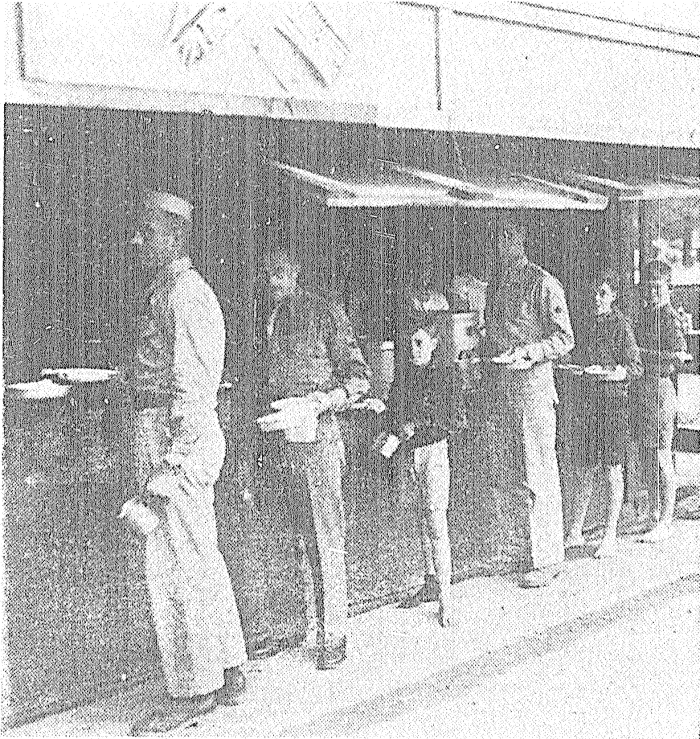 |
|
|
|
Post by emron on May 7, 2024 20:52:36 GMT 12
Camp Orford was established in the homestead and grounds of present-day Orford Lodge at Earls Court, off Hill Rd, Manurewa. It was the former home of Robert Walpole, 5th Earl of Orford who lived there with his family from 1928 until his death in 1931.
|
|
|
|
Post by Dave Homewood on May 7, 2024 21:10:17 GMT 12
|
|
|
|
Post by emron on May 8, 2024 20:55:20 GMT 12
Ron, Here is Purewa and Bastion Pt Radio 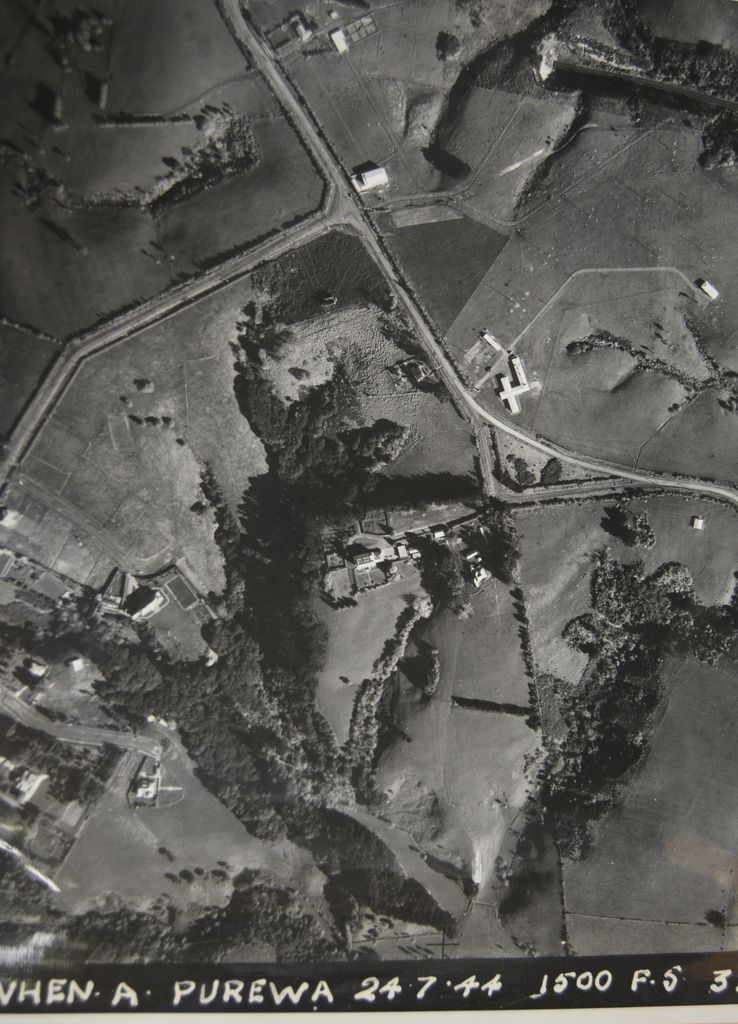 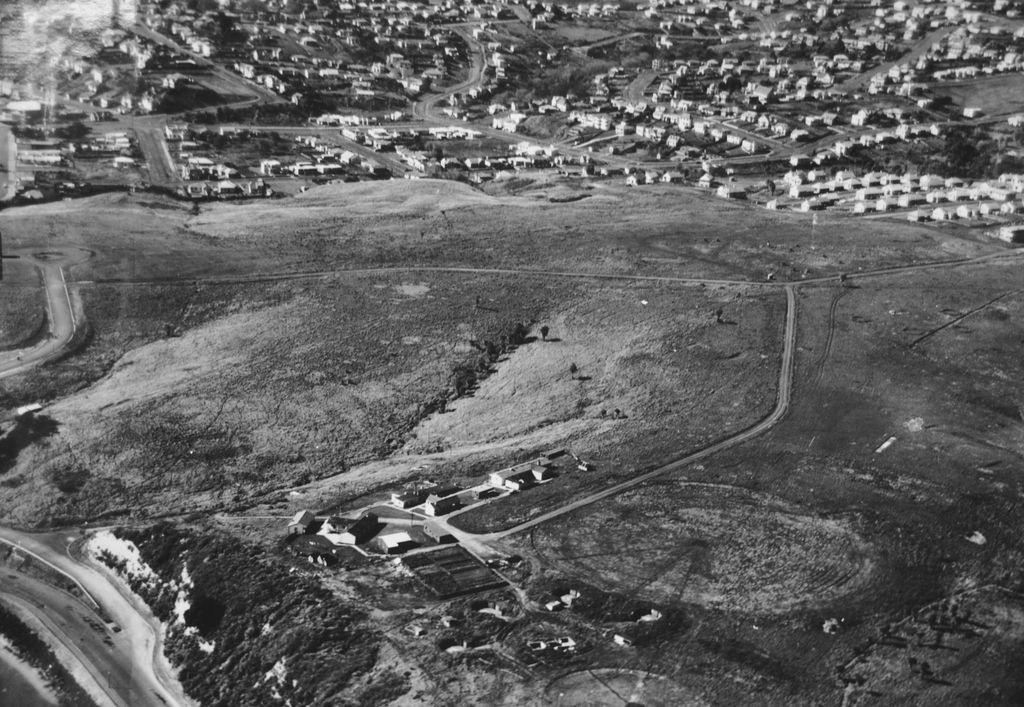 he Plus a few others that may be of interest  Rooseville Pukeko  Karaka North 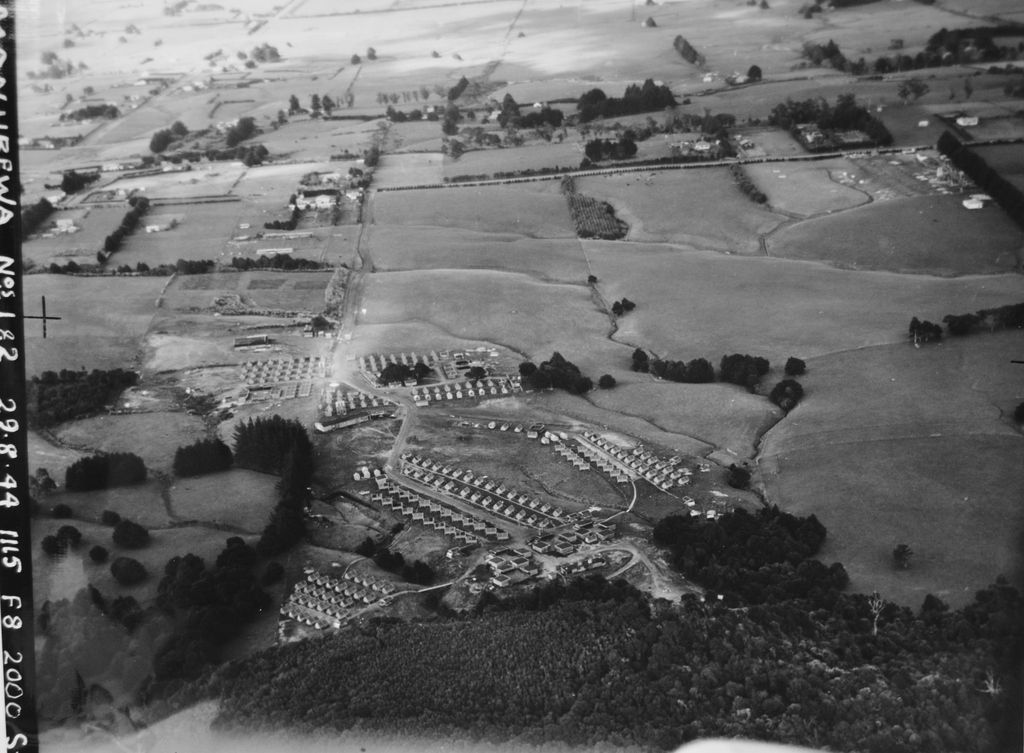 Manurewa 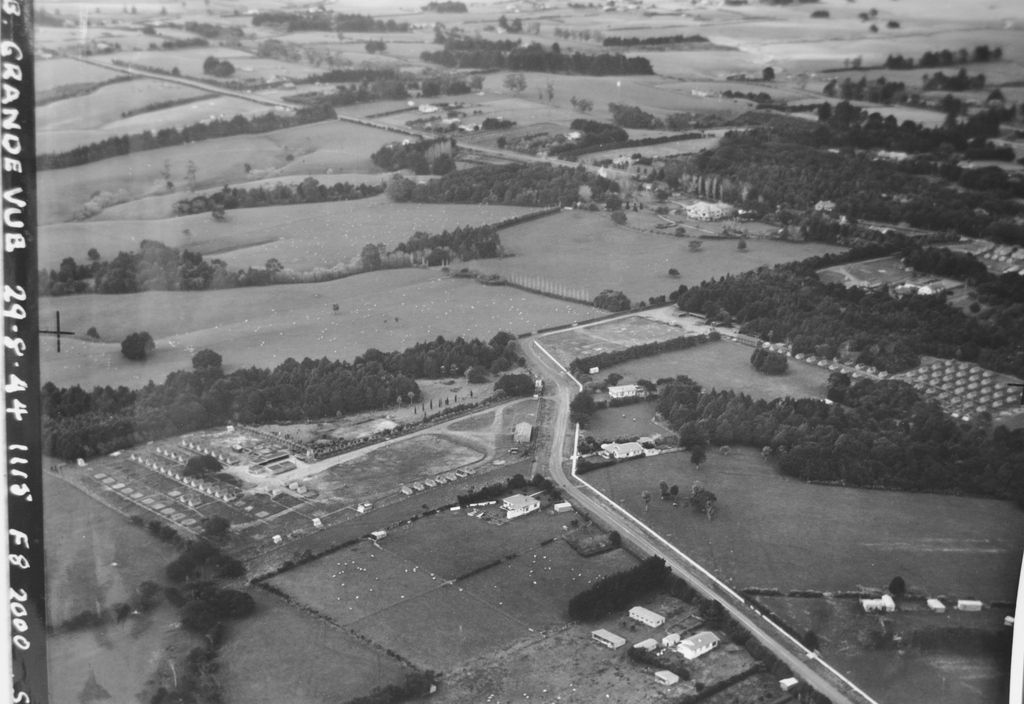 Grande Vue 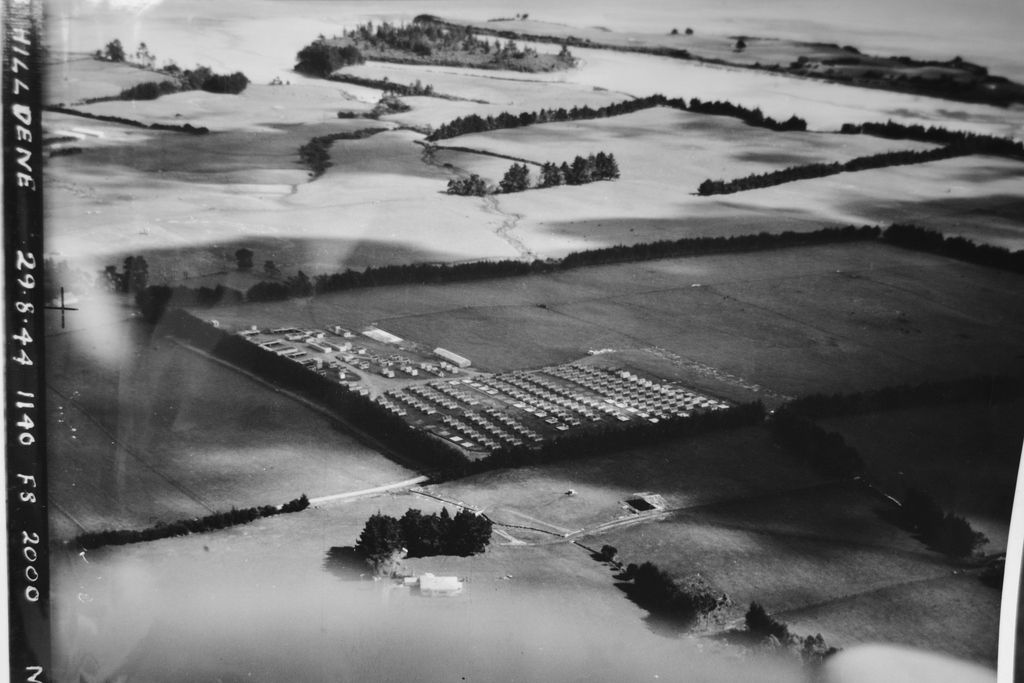 Hilldene 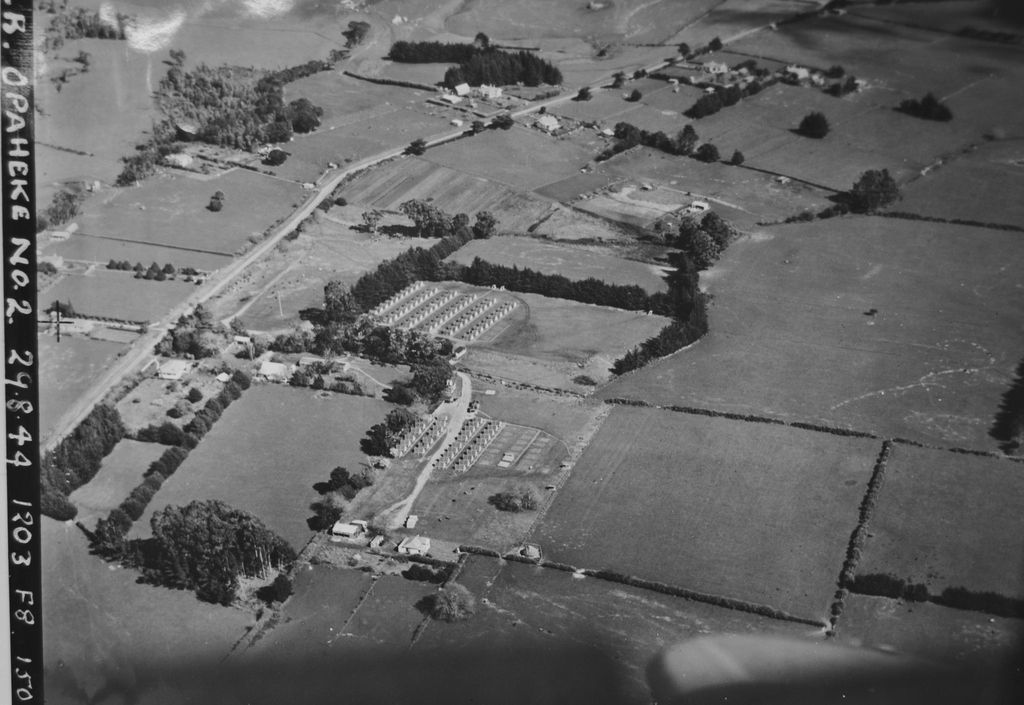 Opaheke  Pukekohe Racecourse The image labelled Manurewa Nos 1&2 has been taken above Totara Park (at bottom) looking south towards Hill Rd. The camp(s) in the foreground occupy land that is now part of the Auckland Botanic Gardens. SH1 today would run diagonally through the top right-hand corner of this shot, parallel to the row of trees. The image labelled Grande Vue has been taken above Gt South Rd looking east along Grande Vue Rd with Hill Rd running from top left to middle right in the background. The camp to the left of Grande Vue Rd is centred on current-day Collie St, Manurewa. Nearby Camp Orford can also be seen at middle right in this photo, this side of Hill Rd. |
|
|
|
Post by Dave Homewood on Jun 16, 2024 12:49:52 GMT 12
AMERICAN BASE
EARLY CLOSING
NAVAL SECTIONS
ARMY MAY FOLLOW
EFFECT ON AUCKLAND
There are definite indications that the anticipated reduction of American activity in New Zealand is now taking place. In particular, it is expected that there will be a progressive and rapid reduction of naval activity in the next few months, and it would not be surprising if existing establishments had been virtually abandoned by the spring.
The trend has been clearly indicated by announcements that various premises have been vacated. The most important of these have been the camps at Paekakariki, the hospitals at Silverstream (Wellington) and Avondale, and the officers' mess at the Grand Hotel and the Arundel private hotel in Auckland.
Establishments Affected
It is obvious that the American naval authorities are following the very sensible policy of vacating premises immediately the need to use them has disappeared. It is equally apparent, that the progress of war in the Pacific has made it unnecessary and probably uneconomical to maintain a large base at Auckland when this area is now so distant from the scene of operations, especially as successive island captures have provided the Americans with a variety of excellent bases much nearer the enemy.
The resulting reduction of activity in New Zealand will affect a number of establishments and spheres of work. The naval operating base at Auckland still maintains a large mobile hospital at Remuera, barracks in the Domain, Victoria Park and at Mechanics' Bay, and a headquarters in the Government buildings in Jean Batten Place.
The duties it fulfils, particularly in the employment it gives New Zealanders in several avenues, also affects the life of the community in many other ways.
Purchasing Board Will Remain
The exact effect of a general reduction of American activity on the employment of New Zealanders is still to be seen, but it can be expected that the Joint Purchasing Board, which handles purchases of New Zealand supplies for American forces, will continue to be represented in New Zealand long after the operating base has been closed.
Except for skeleton forces, the board will possibly be the only American service organisation left in New Zealand. It. is expected that the hospital at Remuera will be vacated very shortly. The need to maintain the three barracks will also disappear, and it may well be that the one at Mechanics Bay will be the most convenient to maintain for the slender maintenance forces left behind after the operating base moves out.
Other Services
The change will also affect large numbers of officers and other ranks who have come to know and to be well known to New Zealanders over the last two years. So soon as their job is done, they will leave New Zealand for other duties.
If the expected reduction of naval establishments is accompanied, as is generally expected, by a similar reduction of Army establishments, the effect on the city will be greater than ever.
Army establishments include two hospitals, one a general and the other a station hospital, various camps and barracks, two hotels and a large office building.
The reduction would also affect the American Red Cross, which has embarked on many activities since it came to New Zealand, for instance, it has leased buildings not only in Auckland, but also at Hamilton and Rotorua, as well as having built several rest camps for combat-weary personnel from the forward areas.
New Zealand Herald, 16th of June 1944.
|
|
|
|
Post by emron on Jun 16, 2024 17:15:29 GMT 12
Under the New Zealand History site, their map of US military forces in NZ, click on each of the camp icons. This reveals further location details and which units occupied the camp and the duration of their stay.
|
|
|
|
Post by Dave Homewood on Jun 16, 2024 19:51:20 GMT 12
|
|

